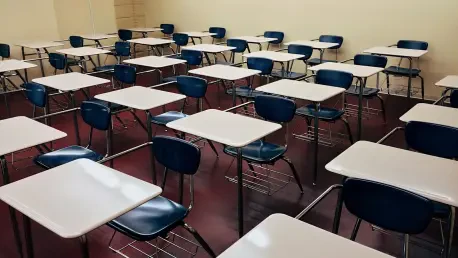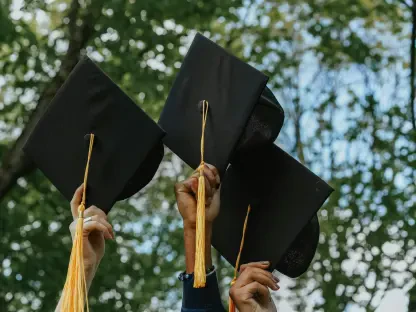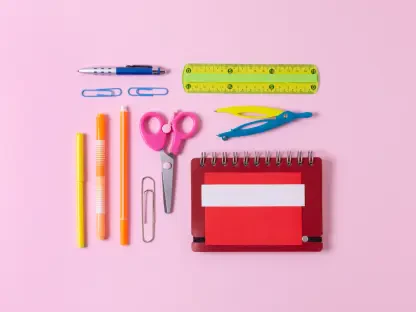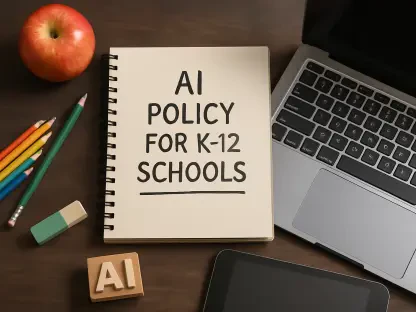In an era where smartphones are nearly ubiquitous among students, a growing concern over their impact on learning environments has prompted innovative responses from educators across the nation, particularly at Paw Paw Public Schools in Michigan. A bold policy restricting cell phone use during class time, known as the “Disconnect to Reconnect” initiative, has emerged as a potential game-changer by confining phone access to lunch periods and requiring students to store devices in lockers or other designated areas during instructional hours. Now in its second year of implementation, the policy addresses the pervasive issue of digital distractions that often undermine student engagement and focus. Early results suggest a significant shift in classroom dynamics, sparking curiosity about whether such measures could serve as a blueprint for other districts grappling with similar challenges. This development raises important questions about balancing technology with education and prioritizing student well-being in modern schools.
Tackling Digital Distractions in the Classroom
The core motivation behind the phone restriction policy at Paw Paw Public Schools stems from a recognition of how deeply smartphones can disrupt the learning process. Administrators have long noted that constant notifications and the temptation to check social media pull students away from lessons, often leading to fragmented attention spans. Superintendent Jeremy Davison has emphasized that mobile devices contribute to heightened anxiety among students, creating a barrier to effective education. By enforcing a rule that keeps phones out of classrooms, the district aims to reclaim valuable instructional time, ensuring that the limited hours spent in school are dedicated to meaningful learning. This initiative reflects a broader concern among educators about the need to create environments where focus can flourish, free from the incessant pull of digital interruptions. The early feedback from teachers points to a noticeable improvement in student participation, suggesting that this approach may address a critical gap in modern education strategies.
Beyond the immediate goal of reducing distractions, the policy also seeks to foster a culture of presence and attentiveness within the school. Assistant Principal Tracy Derhammer has reported a steep decline in phone-related incidents since the policy’s introduction, with initial resistance giving way to widespread compliance. A notable milestone was a day without any violations, a testament to how quickly students can adapt when expectations are clear and consistently enforced. This shift indicates that while the adjustment period may involve challenges, such as confiscating devices from non-compliant students, the long-term outcome is a more disciplined and focused classroom environment. Moreover, the policy underscores the importance of safeguarding the school day as a time for learning rather than digital engagement. The success of this measure at Paw Paw could inspire other schools to consider similar restrictions as a way to prioritize educational goals over unrestricted access to technology.
Reviving Face-to-Face Interaction Among Students
One of the unexpected yet welcome outcomes of the phone-free policy has been a resurgence of personal interactions among students during non-class times. Principal Tammy Southworth has observed that many students now choose not to retrieve their phones even during lunch periods, opting instead for direct conversations with peers. This change marks a significant departure from the common sight of students huddled over screens, disconnected from those around them. By removing the constant lure of digital communication, the policy has encouraged a return to genuine social engagement, allowing students to build stronger interpersonal connections. Such interactions are vital for emotional and social development, aspects often overshadowed by the pervasive use of technology. The shift at Paw Paw highlights how intentional restrictions can create space for meaningful relationships, reinforcing the idea that schools are not just places of academic learning but also of personal growth.
Student perspectives further illuminate the policy’s impact on social dynamics within the school. Senior Sofia Martinez shared that the absence of her phone during class initially felt like a loss, but it ultimately became a catalyst for greater focus and presence. She noted that without the urge to sneak a glance at notifications, her attention remained on lessons and discussions. Similarly, senior Kassidy Derhammer, who helps guide younger students through orientation, pointed out that the initial frustration of being without a phone fades as routines adjust. Students begin to appreciate the freedom of interacting without digital intermediaries, finding value in unscripted moments with friends. These accounts reveal a nuanced reality: while adapting to a phone-free environment requires effort, the benefits of improved focus and authentic connections often outweigh the temporary discomfort. This feedback from students suggests that such policies can reshape not just academic habits but also social behaviors in positive ways.
Navigating Resistance and Legislative Context
Implementing a phone restriction policy has not been without its hurdles, as initial resistance from students posed a significant challenge for Paw Paw administrators. In the first year of the initiative, roughly a third of students violated the rules, testing the resolve of teachers and staff tasked with enforcement. However, through consistent application of consequences and clear communication about the policy’s purpose, the number of repeat offenders dwindled to a small fraction. This progression demonstrates that behavioral change is possible when supported by a structured framework and unwavering commitment from school leadership. The experience at Paw Paw underscores the importance of patience and persistence in rolling out such measures, as student buy-in often develops over time rather than immediately. It also serves as a reminder that resistance is a natural part of adapting to new norms, but it does not necessarily signal failure if addressed with strategic planning.
On a broader scale, the push for phone restrictions at Paw Paw aligns with ongoing legislative efforts in Michigan to address digital distractions in schools. State Representative Mark Tisdel introduced House Bill 4141, advocating for a classroom phone ban, though it faced opposition and did not pass. Undeterred, plans are in place to revise the proposal into a stricter “bell-to-bell” restriction, with direct engagement planned between lawmakers and educational institutions. This legislative backdrop reflects a growing acknowledgment of the risks posed by unchecked phone use during school hours, echoing the concerns of Paw Paw administrators who stress the limited time available for education each day. The intersection of local policy and statewide debate highlights a critical moment for schools, where the need to protect learning environments is gaining traction. As these discussions evolve, the experiences of districts like Paw Paw could inform future policies, offering real-world insights into the challenges and successes of limiting technology in educational settings.
Reflecting on a Path Forward for Education
Looking back, the journey of implementing phone-free classrooms at Paw Paw Public Schools revealed both the complexities and rewards of curbing digital distractions. Administrators and students alike navigated a landscape of initial pushback, yet ultimately witnessed tangible improvements in engagement and interpersonal connections. The policy’s success in reducing anxiety and fostering focus stood as a powerful testament to the value of prioritizing instructional time over unrestricted access to technology.
Moving forward, the insights gained from this initiative could guide other schools in crafting similar policies tailored to their unique needs. A key takeaway was the necessity of consistent enforcement paired with open dialogue to help students understand the benefits of disconnecting. As districts and policymakers consider adopting such measures, they might explore flexible frameworks that balance discipline with education, ensuring technology serves as a tool rather than a barrier. The path ahead involves continuous evaluation and adaptation, with an eye toward enhancing student well-being and academic success in an increasingly digital world.









